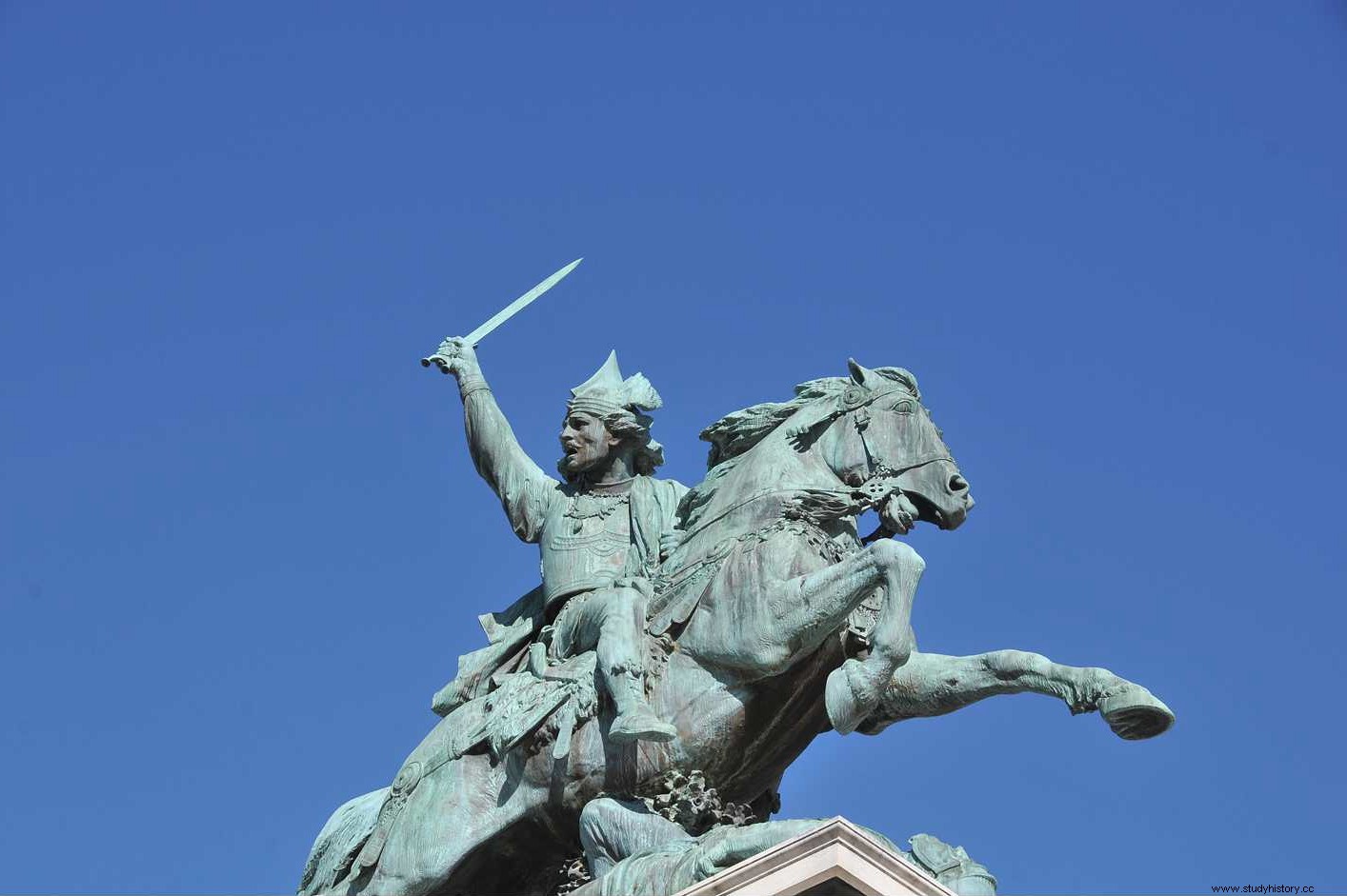 3000 m2 of basalt paving were unearthed on the Gallic site of Gergovie. A unique discovery.
3000 m2 of basalt paving were unearthed on the Gallic site of Gergovie. A unique discovery. By Belenos! Gauls or Romans?... It was under a blazing sun that an impressive black basalt paving was discovered this summer on the plateau of Gergovie (Puy-de-Dôme), the famous Arverne site on the ramparts from which the Roman legions of Caesar ran aground, repelled by the Gallic peoples gathered under the aegis of Vercingetorix, in 52 BC. Victory which was to shortly precede the defeat of Alesia. 120 m long by 25 m wide, the monumental stonework confirms the imposing dimensions that this oppidum* must have possessed. (city) quoted in Comments on Gallic War * (De bello gallico ) of Caesar.
 Part of the monumental pavement unearthed on the site of Gergovie, end of August 2016. Credit:Peter Jud
Part of the monumental pavement unearthed on the site of Gergovie, end of August 2016. Credit:Peter Jud
"In 2015, after the unearthing within the ramparts of Gergovie, of a main gate 7 m wide, to which were associated the remains of a square tower 5 m on a side, the 2016 excavations have just been completed. finish on the clearing of a paved square of almost 3000 m 2 area!", rejoices Peter Jud, the Swiss archaeologist in charge of the excavations. "Unheard of in the Gallic world. Sundoubtedly the heart of Gergovie" , enthuses the researcher, still surprised by the extent of the findings.
It was starting from the city gate towards the center of the plateau that a path paved with basalt blocks was first cleared for about thirty meters before 200 meters from the entrance, under the trowels and brushes of about thirty volunteers, the huge basalt slabs of a vast square appear:"A center unknown development, which is a unique discovery in France ." "Subject to more precise dates, the Gergovie gate dates from the 60s BC, and the paved square, from The Gallic Wars, a period between 60 and 40 BC" , adds Peter Jud.
A Gallic agglomeration which is not unanimous, however
"If the remarkable developments discovered this year are unknown to the Gallic era, it is precisely because this Gallic city that we have been looking for for more than a century... may not be" , ventures Matthieu Poux, professor of archeology at Lyon-II University, director of the ARAR-UMRS 5138 laboratory at the Maison de l’Orient et de la Méditerranée. There are indeed a few points of discussion between specialists around the emblematic site.
OPPIDUM. From the 2nd century BC, a new type of habitat appeared:the oppida (oppidum, in the singular). This term designates important centers and grouped habitats. This phenomenon of urbanization will concern the majority of regions considered as Celtic. These were above all centers with an economic and religious vocation occupying key positions in the territory. In his Commentaries on the Gallic Wars, Caesar spoke of oppida (cities), vici (villages) and aedificia, for isolated settlements.
 Aerial view of the plateau of Gergovie, in the Puy-de-Dôme, where the armies of Vercingetorix clashed and Caesar's Legions, in 52 BCE. Credit:Auvergne Tourist Office
Aerial view of the plateau of Gergovie, in the Puy-de-Dôme, where the armies of Vercingetorix clashed and Caesar's Legions, in 52 BCE. Credit:Auvergne Tourist Office
"In Gergovie, the whole question now remains whether we are in a city from the first half of the I st century before our era - either a Gallic city -, or in a city dating from the second half - that is to say, a Roman city after the famous battle of 52, then populated by Romanized Gallic elites and Romans. It remains to be proven that the recently unearthed basalt pavements are contemporary with the ramparts where Gauls and Romans clashed, and that they are not later, non-Gallic installations. The excavations currently being carried out in Gergovie are therefore of major importance in answering these questions" , specifies Matthieu Poux, head of the archaeological excavations of Corent, an important oppidum Gallic founded by the Arverni, and located 7 km from Gergovie.
Occupied until the time of the change of era, that is to say between 10 BC and 10 AD, Gergovie seems to have been abandoned, then moved to the plain, 5 km away, where it became the Gallo-Roman city of Augustonemetum, the future Clermont-Ferrand. Completed on September 2, 2016, the archaeological excavations of Gergovie should resume next summer, and no doubt reveal new surprises.
The Gallic Wars (58-51)
 The statue of Vercingetorix, the chief Arverne, in the city of Clermont-Ferrand (Puy-de -Dome)
The statue of Vercingetorix, the chief Arverne, in the city of Clermont-Ferrand (Puy-de -Dome)
Caesar intervened in Gaul from 58 BC. Due to the divisions existing between the Gallic peoples, he will advance while having to face a large-scale revolt led by a young Arverne nobleman, Vercingetorix. Many peoples of the Celtic indeed leagued against Rome and rallied to him. Using a novel guerrilla-like strategy, the Gauls will endanger Caesar and his legions. After the great success of Vercingetorix in Gergovia, the Arverne chief will however have to capitulate at the end of the siege laid by Caesar in front of Alésia, in September 52 before our era.
